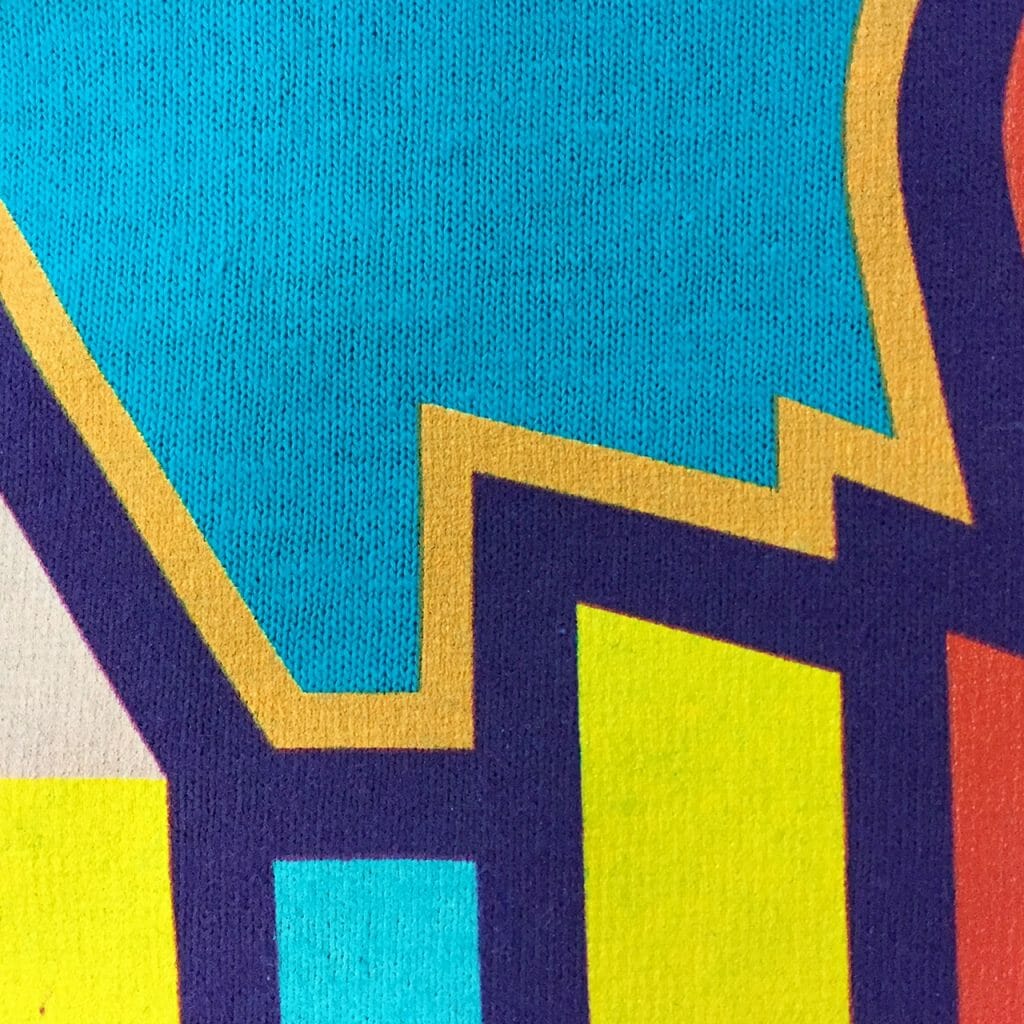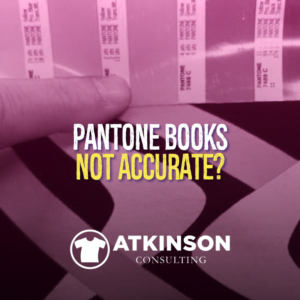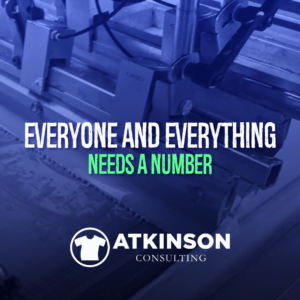
The Inferno is the first part of Dante Alighieri’s famous story, the Divine Comedy, that you were forced to read in high school literature class and have since long forgotten. In the tale, Dante is journeying through hell, and is guided by the poet Virgil. To get to hell, he passes through nine circles of suffering.
To liberally borrow a metaphor for this article, that’s not unlike what it feels to have registration problems on press with a deadline looming. As t-shirt printers, we’ve all been there. That image just won’t register. It has to ship in three hours. You’ve got a crew standing around while you work your magic. Your scalp has small bloody circles appearing as you pull your hair out.
Before you just crank down on the squeegee pressure to solve your problem like a rookie, or worse, storm up to the art room like a maniac; settle down and check these nine common problems and see if they show up in your shop.
A good bit of the time these challenges are preventable…
Who is Minding the Store?
The keystone to screen-printing t-shirts has always been the quality of the screens. How dialed in is your screen room? For some shops, the problem employees always seem to wind up there. If you don’t have attentive, craftsmanship-minded staff members pushing out first rate screens, how can you expect the best images to show up on press?
The screen room shouldn’t be a purgatory level for your employees. You know, the waiting area you have before you fire them. Sound familiar?
Instead, your screen room should operate like a store, and your screen-printing department it’s only customer. The screen room staff should do anything and everything they can to make their only customer happy. This has to include quality as the primary objective. On-time delivery is a close second. Those screens need to be there waiting when you grab them to stage an order.
What happens when customers don’t like something? They return it.
Having some quality issues with your screens? Start your investigation with the training and procedures that your screen room staff operates with daily. Do they really know what they are doing? There are a lot of steps to making screens properly. Are they following them each and every time perfectly? No shortcuts?
How do you know? How much time do you really spend in there? It certainly isn’t the sexist part of the shop.
Make sure the staff that you have tasked for this critical step are up to the challenge. Every screen should be meticulously created and exact in its purpose. It doesn’t do anyone any good to have a perfectly coated screen that has been imaged and exposed properly, and during the wash-out phase the worker blows out all the halftones with a pressure washer. Slow down and do it right.
Screens: What to Look For
Whether you use static frames or rollers, a few basic things could affect your registration. These are tension, how you are imaging, and the condition of the frame.
For screen tension, most industry experts agree that you need at around 20 newtons for an acceptable image for t-shirt printing. For super high end work with a lot of halftones and detail, you want to be in the 30+ newton range. You do own a Newton Meter, right? If you do, does it ever come out of its case? If you don’t, you should buy one. You can’t manage what you don’t measure, and believe me…this is something you need to manage. Crossing your fingers that everything is ok isn’t usually good management.
The higher the tension the better, as this also affects your ink deposit and how you shear the ink with the squeegee. Roller frames will give you better tension, as when you constantly use and reclaim them you can ratchet up the tension with work-hardened screens. Static frames can give you acceptable tension too, but as you use them the tension will go away. Either model screens work fine.
What happens with low tension screens is that as the squeegee travels the distance across the screen, the screen flexes downward towards the shirt. Like a trampoline with a kid jumping up and down. If you have ever had a problem registering your underbase plate with the image peaking out underneath above and below the art, this could be due to a screen tension problem. The screen is just flexing more, and this is causing the image to stretch when you print.
Most screen tension problems will cause the image to elongate in the direction that the squeegee travels. Tighter, higher tensioned screens don’t do this and keep their art more consistent.
What About the Art?
Occasionally the art will be the culprit for the registration challenge. As a former art director, I can tell you that this occurs…despite what the funky bunch in the art room may say. There are a few ways this could happen.
First, the file just could be improperly separated. That’s an easy check as you just need to pull it up on the computer and compare to the currently printed version to see what’s off. Bust out a new plate, make some screens and you are on your way. Right after you do, or do not, give the artist a lecture about checking their work.
Next, it could be the separation plates themselves. You’ll have less trouble if the files are sent to the screen digitally. If you are still using vellum or film, your problem could be with the substrate you are choosing to print your image with. Vellum can be affected by humidity, and slight changes can occur. For film, I’ve seen issues with plates where half the screens were printed with the end of one roll, and the rest at the beginning of another. For some reason, these don’t line up that well. Imagesetters have their own island in our graphic arts hell. Sometimes it pays to do jobs with lots of screens with a new roll of film.
Locked and Loaded
In our fourth circle of hell, we’re still discussing art and screens. Remember that when you are standing there at the press wondering what is going on. In this circle, let’s discuss how the image actually gets on the screen.
For some shops that have a big enough wallet to have a direct to screen system for imaging the screens, the problem could be that the screen wasn’t nestled into the device correctly. Regardless of the manufacturer, screens need to fit tightly against the machine frames and be locked in. If your screen room tech is in a hurry or careless, they could be imaging screens that aren’t properly seated in the machine before imaging. It pays to double check. Every. Single. Time.
For shops that are still taping their plates onto the screens, a similar problem could be occurring. Either the screen isn’t being nestled into the table jig you’ve set up, or the plate shifted when you were taping it to the screen.
Remember, consistency in imaging each screen is important. If you are judging your screen room by their output, they may be taking some shortcuts to increase their quantity of screens per shift. These small quality ensuring steps may be the first to go. Will this make their only customer happy at the end of the day? I doubt it.
On the Level
On press, if you have registration issues that only occur once every few shirts you could have a challenge with your boards not being level to the screen. For great prints to happen, the platen and the screen have to be parallel. If you print a lot of shirts, you should be checking this at least weekly.
For boards that aren’t level, what you will see is a slight shift in the print usually left or right on the image. As the platens are constantly rotating around the press, this could look completely at random when you are printing once you notice it. It just all depends on what board it is, and what was just printed. Worse is when it is more than one board.
A simple way to check to see if your boards are level is to use your on press flash unit as the standard to measure by. Rotate the boards around and note the distance between the bottom of the flash unit and each board with a ruler. Be careful if this is hot. (Ouch!) Everything should be the same. If you find one or two that are out of standard, get those adjusted and solve your problem.
Need to level your press boards? Check out this helpful video.
Operator Error
So if it isn’t the art, screens or the press that is root the issue…the cause could be the press operator. If your staff member is still eye-balling the screens for registration and not using Tri-Loc or another registration device, you might want to consider getting some help setting up.
I’ve seen a lot of debate over the years on where to put the registration targets on the job, and what they should look like. In my opinion for t-shirt printing, you just need a set centered on the screen with one above and one below the image. Some shops go the four corner route, but to me that is just more stuff to tape off later.
If you are using registration targets that are centered with the image, you can line them up with your platen by just having a simple line drawn down the middle of the board. This gets the image lined up with the machine quickly. Top. Bottom. Done.
I don’t like the default registration targets that software programs like Illustrator use. They are too small and dense for screen printing. Instead, you can create your own that work better for your shop. A bigger circle with a cross-hair centered is perfect. Make it about the size of a fingernail. Experiment a few times with your screens and emulsion to get it built so you can see it easily on press with your emulsion.
For registering on press, use the underbase screen or the black screen usually to start. Whatever screen all of the other colors will have to be adjusted to is what you want. Get that screen set up first, print an image on a junk shirt or pellon. Flash cure it and then register your next screen with that.
The industry standard for setting up jobs is five minutes per screen. That’s from when you start loading frames and up until you are ready for approval. Veteran printers and a good crew that works together as a team will be way under that.
If you can’t get the screens to register, only change one thing at a time. Look at the print closely. If something is out, make your correction and print another strike-off. If you change multiple things at once you can’t be sure what worked or not. If you want perfection, use a loupe and your micros on the press to really dial it in.
A Sticky Situation
Another common registration issue is the use of adhesive on the platens…or lack thereof. As the shirt goes around the press, it gets picked up from the board as it wasn’t tacked down enough. This happens during a run, and because we’re screen-printers Murphy’s Law kicks in, and the more expensive the shirt the more frequently this happens. It is especially common with fleece and hoodies if you are not careful.
Your puller should be trained to look for this and speak up if more glue is needed during the run. Keep a can of spray tack handy, or a cheap condiment bottle filled with glue that you can quickly card onto the board. Apply as necessary. But be careful, too much glue and you may be distorting your image on the shirt just trying to peel it off the board.
For fleece and hoodies, a good trick to use is to have a roller or lint screen positioned before the first ink screen. This not only smooths out the fabric, but flattens it down into the adhesive on the board better. For longer runs, you can get more shirts printed before reapplying glue this way.
Flex Your Muscles
What’s the number one answer for lazy printers to combat registration issues? C’mon, you know this.
More squeegee pressure of course! It’s the answer to everything evidently. (<—sarcasm)
Why worry about using micros or shifting the screens slightly to get everything bumped into place when you can just shove more ink down on the next color to hide the problem?
Gorilla-armed printers aren’t using their head to resolve the real issue. Remember, if you can see your printed image on your press boards after you’ve removed the shirt, you are using too much pressure. The ink should sit on top of the shirt fabric, not be driven through it like a nail.
Think about that as you watch your press operator circle the press dialing down more pressure as he sets up. Positioning is the answer, not squeegee pressure. Make sure you are training on that constantly.
The Invisible Problem
This challenge occurs at the other end of the dryer belt. Of course your press operator and puller need to be careful and watch what they are doing, but your catcher needs to be observant too.
When there are registration problems and nobody says anything, it is the entire crew’s fault. The catcher isn’t the one printing the shirts, but they are usually the last person to see the shirts before they go into the box and get shipped to the customer. Each shirt should be perfect.
When the customer opens the box, angels should sing.
How can you make this happen? By having a great team and constantly work on training and setting them up for success. Have the work order and art mock up on the table so they can review the order. After the first strike off, position it as the sample for the order (even if you aren’t keeping one for reference later) so that they can see what a perfect shirt is supposed to look like.
You want to be finding your mistakes and have an opportunity to correct them.
The worst problem of all, and the reason it’s the ninth circle of print registration hell, is when your customer finds your mistake. Either they call back up to your company and start the process of getting a credit or the order reprinted….or worse, they just never come back.
This could be an invisible problem to you, as you won’t even know it’s going on. That’s why it is crucial to have a great team reviewing the printed output from your company with a very discerning eye.
Stay Out of Hell – just like your Momma told you.
So how do you avoid hell? By doing the right things. All the time, even when nobody is even looking. For printers, we have to be dialed in perfectly to achieve superior results. The most fascinating thing about this industry, and frankly why I like it so much, is that it is a crazy alchemy of art, science, craftsmanship and hard work.
When you are just a small shop it is easy to control a lot of these variables, because it’s only a few people touching the order. When your company scales and you have a larger operation, many hands make light work. You are only as strong as your weakest link. In your shop, where is that right now? If it is the screen room, you have big trouble my friend.
If you are busy enough and can make the investment, look to upgrading the equipment in your screen room. Eliminating as many variables as you can will make a big difference. Automating the work is the key.
An auto-coater can give you perfectly coated screens. A direct to screen system can help you maximize your time, eliminate moire, reduce your image substrate costs, organize your files, and most importantly set up your presses with pre-registered screens. The new M&R STE System can image and expose a screen in under a minute. Think about how that can impact the workflow in your shop.
One last word though. All the gadgets and industry tips go out the window if your production leadership isn’t on top of these problems. Training and coaching can make an incredible impact on your quality control and daily output. This only happens with empathetic teaching and making it easy for people to be a success.
It’s your job to stay out of hell.
“Perfection may not be attainable, but if we chase perfection we may catch excellence.” – Vince Lombardi






2 comments